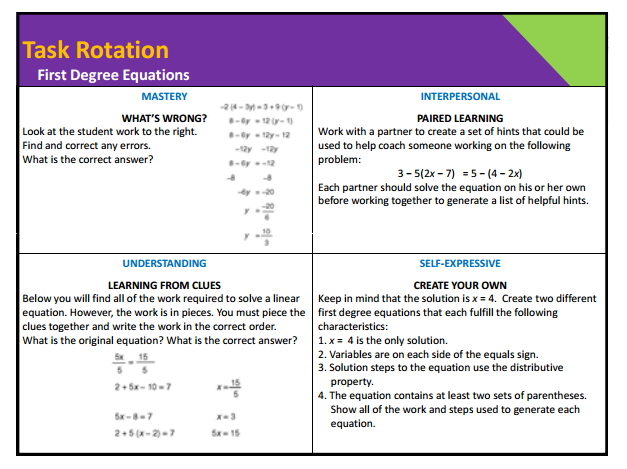As I mentioned on an earlier post, I am now obsessed with the idea of differentiating by learning profile. I know I have a good understanding of what learning profile really means, but now I'm to the more difficult implementation stage. I'm happy that I found a colleague who will help me fine tune some of these ideas, and I have found an overwhelming amount of information online to help with this part of the journey.
What I WANT to know (and do)...
From a teacher's perspective, I want to know how to vary my questions, tasks, and assignments in order to address the variety of learning profiles in my classes. I'm still at the point where I'm thinking about a giant juggling routine, but I want to make this more manageable: how to group my students, how to ask questions, how to get students to ask questions, and how to create thoughtful assignments and assessments.
- I found this awesome reflection after our #eduread. @mwbigger classified different types of assignments and assessments according to their Silver-Strong profile. He also referred to Sarah's post about 26 good homework ideas. For some homework assignments, I would love to keep a generic list of possibilities from each of the learning profiles and allow the students to choose their favorite (or maybe one from their style, one from another style?).
From the free preview chapter of the Math Tools book, I found this chart, and I know that will help when I'm designing the work.
I keep reading about Task Rotations, and I think I could start by creating something like this to use on our "bring it all together" or review days. The difference between the task rotations and menus is that for the task rotations, you must complete all 4 tasks, and each task intentionally addresses one of the four Silver-Strong learning styles (mastery, understanding, self-expressive, interpersonal). I found this example on a page of Thoughtful Classrooms' free resources:
A "low prep" idea: I plan to use the vocabulary for each of the profiles, so I could ask my students to identify the types of questions I ask during class. If they're seated with their like profile groups, I could ask them to change my question to one that "fits" their profile (or make up an additional question, if my question matches their profile). To stretch themselves, they could exchange questions with another group and answer at least one question from each category.
I hope each week that I'll say things like, "The next part of class will appeal to those of you who are interpersonal learners; otherwise, you'll have an opportunity to stretch outside your comfort zone a bit," or "If you have a self-expressive learner in your group, then s/he will be able to help you think outside of the box for this activity."
Next steps...I'm ready to look at my own calendar, assessments, and lessons!
Any examples of task rotations for math? Have you grouped your students based on different learning profiles?



